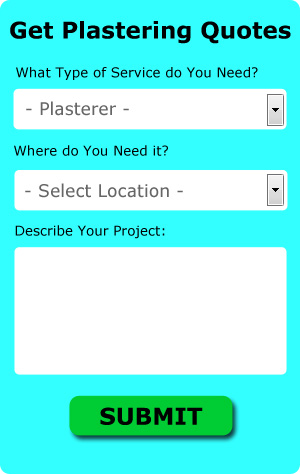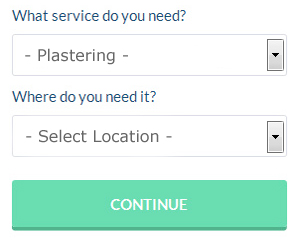Bath Plasterers: Any time you're engaged in refurbishments or improvements on your property in Bath it is more or less certain that you'll either need to have some existing plaster walls repaired or some fresh plaster put onto. Now plastering is a skilled occupation and although you may be quite versatile at DIY, it isn't the sort of work that you should try to do on your own, unless of course you are extremely confident in your capabilities. This is even more crucial if there are ceilings that need to be skimmed, as you'll most likely get your house and yourself in quite a state if you should try it. You'd be better off calling in a professional plasterer to carry out this kind of work, and though you shouldn't have much hassle finding a plasterer in Bath, uncovering one who has the time free to fit your job in might be somewhat more challenging. Plasterers, as with a lot of craftsmen, are generally fully booked up, and so if feasible see if you can book someone in a few weeks or months in advance.
Some plastering work is usually needed, even on modest home restoration projects. It may be skimming some dry lining, applying some screeding, plastering over artex or installing mouldings or coving before decorating. Do not however imagine that these are the only plastering and screeding jobs which may be required, because there are a lot more possibilities.
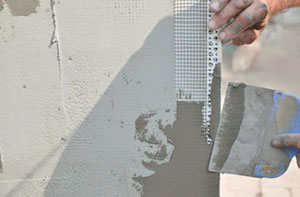
Before work begins you need to check out prospective Bath plasterers to make sure that they know their stuff. Ask if you can examine some images or a portfolio of completed work. Plastering demands a focused approach and should not be done by "cowboys". You may encounter major complications down the line when the quality of the plastering is inferior, and these aren't often immediately apparent.
Any defects in your freshly plastered walls and ceilings will soon become apparent when a coat of paint is applied. Uneven areas become even more accentuated in bright sunlight. It is really a no brainer that you should avoid poor tradesmen, and pick only from experienced plasterers in Bath.
The most vital attribute of plastered surfaces is that they're level and smooth. Small cracks and blemishes can be repaired with filler later on with very few issues, but irregular surfaces are tricky to cover up. Surfaces that are badly plastered can result in trouble with the painting of walls and ceilings, the fitting of skirting boards, the fitting of kitchen units and any area of wall tiling.
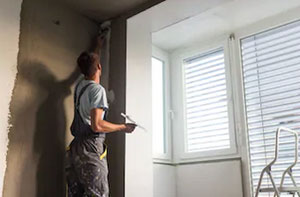
You should expect nothing less than the perfect finish right from the trowel. You can recognise when plastering has been carried out by an expert, as a quick rub down is all that is needed and no sanding is necessary. If forceful sanding is required, you can safely assume that your plastering hasn't been done properly. If orbital sanders are being employed you should check the standard of the work thoroughly.
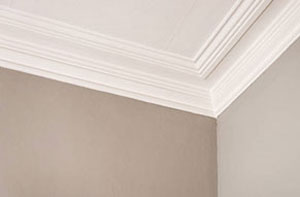
Whilst you might call on the services of a plasterer for many tasks, a common reason these days is for plastering over old artex ceilings. During the 70's and 80's, artex was the "in" finish for ceilings in Bath, at present that is not the case. Most plasterers in Bath will gladly plaster over that old artexed ceiling, making it look more fresh and contemporary. If the reverse is the case, then many plasterers will bring that 1970's style back once more by slapping on a coat of artex.
DIY Plastering Bath: Although when you have plastering work which has to be done in your home or business premises in Bath, it is better to bring in a reputable plasterer to handle it, it is quite possible to have a go yourself, if you have the confidence and are good at DIY. Practicing on an out-of-sight area or a spare bedroom is definitely advisable when you're starting out on your initial plastering adventure. If possible try to choose an area that already has an inaccurately plastered surface, so your endeavours cannot make it much worse. This will allow you to try out your newly acquired skills and should be less stressful than trying to do a wall surface that everyone can see. It is possible to re-plaster a wall as many times as you like to a certain extent, and you can easily have another go if you don't do an acceptable job the first time around.
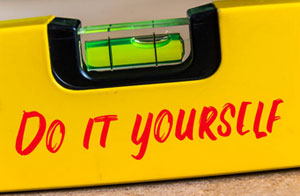
You may be able to get some reasonable plastering tips and advice by watching and following You Tube tutorials on the web if you don't want to go to the lengths of signing up for a plastering course. The problem is that videos can often make it look easy, and plastering is far from that. Plastering is of course "hands on" undertaking and the more you practice the more adroit you become. Through trial and error you may even develop you own techniques for getting a flawless plastered finish. But if you are in doubt, follow the time-tested procedures. The more you do it the more confident you'll get, and let's face it - plastering is all about confidence. You'll be able to start plastering the other walls of your home as soon as you've perfected this art to a level you are satisfied with. If the whole thing goes pear shaped and you make a mess of the plastering, it will still be possible bring in a reputable plasterer to put everything right. Even though he might not be best pleased that you didn't contact him in the first place.
Plastering work can be carried out in Bath and also in: Bradford on Avon, Englishcombe, Larkhall, Batheaston, Southdown, Combe Down, Widcombe, Twerton, Neston, Keynsham, Corston, South Stoke, Bathford, Bathwick, Weston, Limpley Stoke, as well as in these postcodes BA1 0AY, BA1 0QL, BA1 0RD, BA1 0AZ, BA1 0PG, BA1 0GQ, BA1 0AX, BA1 0JQ, BA1 0DE, and BA1 0JN. It's probable that any plasterers from the Bath area will have the telephone dialling code 01225 and the postcode BA1. This could be one of the things you can check if you would like to guarantee that you hire local plastering. Bath householders can benefit from these plastering services.
Tools for Plastering
Plasterers use a lot of tools that don't appear in the toolbags of other craftsmen or do-it-yourselfers, which is the explanation why the majority of plastering work in Bath is generally done by qualified plasterers. Here are just a few of the tools that a qualified Bath plasterer will work with:
- Plasterer's Hawk
- Plasterboard Carrier
- Plaster Pan & Buckets
- Plastering Rule
- Stilts
- Edging Trowel
- Jointing Knife
- Plasterer's Trowel
- Finishing Trowel
- Feather Edge
- Dry Lining Rasp
- Plaster Mixing Paddle
Pebble Dashing Bath
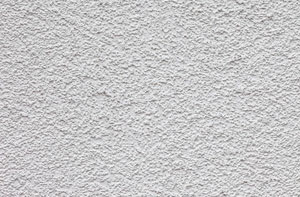
Pebble dashing has been used for many years to protect and decorate the outsides of dwellings. Although traditionally it isn't everybody's cup of tea. Plasterers will sometimes carry out this type of work for you, although there are pebble dash specialists out there. Pebble dash normally consists of 2 layers of a base coat made from lime and sand onto which small pebbles or gravel are firmly pressed to give both refurbished and new houses a maintenance free, robust and decorative finish. (Tags: Pebble Dash Bath, Pebble Dashers Bath, Pebble Dashing Bath, Pebble Dash Removal Bath)
Screeding
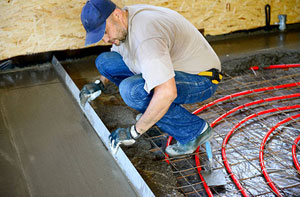
Screeding is a technique by which a level, smooth floor surface is established using a sand and cement mix. Screed is normally put on top of a concrete sub-floor to encase underfloor heating pipes, to take on the final floor finish or to be used as a finished hardwearing floor surface. This will considerably increase the lifespan of the whole floor and positively affect its finish, durability and quality, for several years. Hand mixing screed should only be used for smaller areas, in all other instances a proper screed pump should be employed to rapidly guarantee an even, smooth mixture of sand, cement and water and to transport (pump) this perfect mix straight to where its needed, avoiding the use of wheelbarrows and similar paraphernalia.
Plasterboarding (Dry Lining)
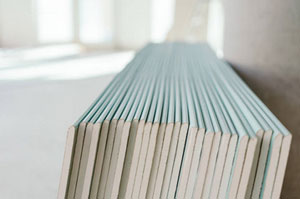
Many plasterers in Bath also provide dry lining services, which will be required in a lot of home improvements. A process that creates an acceptable wall surface which doesn't have to be plastered, plasterboard can be fixed to metal Gypframe, a brickwork or masonry surface or a wood studding. Although in certain instances the plasterboard itself may be decorated (with some extra preparation), an exceptionally smooth surface is created by applying a final skim of finishing plaster. In terms of fittings, when attaching to a metal frame self-drilling, self tapping (Jack-Point screws) are used, when attaching plasterboard to timber joists or studding, drywall screws or nails are used and when fixing to a brick or masonry wall "dot and dab" bonding compound is used.
Polished Plastering Bath
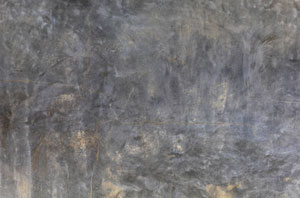
Polished plaster is a regular term for the finished surface of certain plasters and for the description of new sorts of conventional Italian plaster finishes. The phrase covers a whole collection of decorative plaster finishes - from the highly polished Lucidato, Venetian plaster and Marmorino to the textured polished plasters. Offering a surface finish that appears very like limestone, marble or travertine, polished plaster is normally used on internal walls and ceilings. Polished plaster is smooth to the touch but offers natural variations of shade and a sense of depth. Distinctive customized finishes can be achieved by mixing these various kinds of plasters. By making use of natural or artificial colourants, beautiful tints or colours can be given to the polished plaster finish. Should you want to achieve a "marbled" effect in your polished plaster, or unique designs or colours that do not exist in nature, the ability to tint Venetian plaster is particularly beneficial. (Tags: Venetian Plaster Bath, Polished Plaster Bath, Marbled Plaster Bath, Polished Plasterer Bath)
Plaster
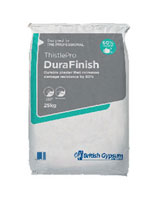
Plaster is a building material used for decorating or protecting ceilings and walls in Bath, and for making decorative components. The term "plaster" generally refers to a material that is applied to the inside of homes in Bath. The material which is used for on external areas is referred to as "render". The plaster mix itself may include different ingredients but most commonly comprise of either cement, lime, or gypsum. All these mixtures work in a similar way, but have got different uses. Plaster is a dry powder when manufactured and when required, is simply mixed with water to form a stiff but easy to work paste immediately before application. The reactions between the plaster powder and water generates heat through crystallization and the mixture subsequently hardens.
Plastering Courses Bath

If you would like to get some basic skills in plastering or possibly even start a career in plastering you may want to consider enrolling for an appropriate course. For people seeking to better their plastering techniques and for beginners just setting off on their journey, there are actually quite a lot of plastering courses available. Plastering courses are offered in both NVQ and City & Guilds with alternatives for either complete novices or intermediate tradespeople. Beginners courses in plastering (level one courses) cover things such as applying scratch coats (wall surfaces), fixing sheet materials, putting on set coats (walls), mixing plaster materials, applying floating coats (walls) and preparing background surfaces. Intermediate and advanced (level two courses and diplomas) deal with things like fibrous plasterwork, reverse moulding for fibrous plasterwork, dry lining/plasterboarding, cement and sand screeding and plastering to exterior backgrounds. To discover more on currently available plastering courses in Bath and and Somerset, search on Yahoo or Google. You will be able to find out more information on City and Guilds plastering courses by going HERE. (Tags: Beginners Plastering Bath, Plasterers Courses Bath, Plastering Lessons Bath, Plastering Courses Bath)
Rendering
One effective way to boost your property's exterior is through rendering, which offers both aesthetic and functional benefits. This involves layering a protective coating, commonly a combination of cement, lime, or acrylic, onto the outside walls. Acting like a barrier, this layer helps protect against rain, wind, and frost damage. Additionally, it gives your home a sleek, modern appearance, allowing you to select from an array of colours and finishes that suit your personal style. Whether you're doing up an older property or refreshing a newer one, rendering is a practical option that also looks great.
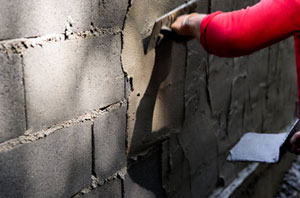
Apart from its aesthetic benefits, rendering can significantly enhance your home's overall performance. A lot of modern rendering systems feature insulating qualities, which help keep your home warm during the winter and cool in the summer months. This extra insulation not only boosts comfort levels but also has the potential to lower your energy bills in the long run. On top of that, rendering helps close up any cracks or flaws in the walls, which can minimise the risk of dampness and water penetration, ultimately saving you from expensive repairs later on. It's a durable solution that safeguards and maintains your property in Bath.
For optimal results, it's definitely a good idea to seek out professional advice to find the most appropriate materials and techniques for your property. By consulting experts, you can ensure that the application is done precisely, resulting in a sleek and durable finish that lasts over time. They'll also take you through the necessary maintenance steps, so your rendered walls remain in superb shape for years to come. Whether it's choosing the right texture and colour or selecting systems that work well with your local climate, their expertise is simply invaluable. With the right strategy, rendering can really change the look of your home's exterior in Bath, while adding insulation, protection, and value too. (Tags: Rendering Bath).
Acoustic Plastering Bath
Plagued by unwanted echoes or having difficulty following conversations in a busy environment? Acoustic plastering might be the answer you're seeking. This ground-breaking technique tackles sound problems by using specialist plaster that absorbs sound waves. Unlike its standard equivalent, acoustic plaster incorporates fibres or aggregates that disrupt sound energy, reducing echo and creating a more comfortable listening environment.
Thankfully, modern acoustic plaster systems are entirely safe, having ditched the hazardous asbestos used in historical versions. Today's systems typically comprise two layers. The initial layer, often made from mineral wool or a special blow-glass granulate, acts as the sound absorption foundation. Finishing coats are then applied on top, providing a smooth aesthetic finish while further dampening sound.
Forget clunky soundproofing methods! Acoustic plaster offers a number of advantages. Firstly, it creates a seamless, uninterrupted look, a stark contrast to acoustic panels with their obvious grids. Secondly, its flexibility allows for application on curved surfaces and intricate designs, providing greater design freedom for your project. Plus, some acoustic plaster systems can even integrate with heating and cooling systems, adding further functionality and making them a versatile choice for any space. (5265 - Acoustic Plastering Bath)
Plastering Tasks Bath

Bath plastering specialists can usually help you with lime rendering, artex broken leather patterns, pebble dashing restoration, plastering over artex, quotes for plastering and rendering, skimming plasterwork, soundproofing, repairing holes in walls and ceilings, bonding Bath, decorative mouldings, floor levelling in Bath, external plastering, lay in grid suspended ceilings, relief plastering, drywall repair and installation, dry dashing, ceiling replacements, false ceilings, traditional & modern plastering Bath, insurance work, render repairs, plastering archways in Bath, coving and cornices, the plastering of archways, Venetian polish plastering in Bath, tyrolean rendering Bath, fibrous plaster, lime hemp plastering, home insulation, magnetic plaster, coloured lime plastering, barrelled ceilings & walls in Bath, dragged plaster in Bath, floor levelling and screeding, rendering with sand and cement and other plastering work in Bath, Somerset. Listed are just a selection of the duties that are accomplished by local plasterers. Bath specialists will inform you of their whole range of plastering services.
Plasterers Near Bath
Also find: Larkhall plasterers, Twerton plasterers, Limpley Stoke plasterers, Keynsham plasterers, Widcombe plasterers, Bathwick plasterers, Bradford on Avon plasterers, Weston plasterers, Southdown plasterers, Neston plasterers, Corston plasterers, Bathford plasterers, Combe Down plasterers, Englishcombe plasterers, Batheaston plasterers, South Stoke plasterers and more. The majority of these localities are covered by local plastering contractors. Business and home owners in the area can get plastering quotations by going here.
Bath Plastering Services
- Bath Artexing
- Bath Plaster Overskimming
- Bath Polished Plaster
- Bath Plastering Courses
- Bath Latex Screeding
- Bath Plastering Quotations
- Bath Domestic Plastering
- Bath Coving Installation
- Bath Float and Set
- Bath Plaster Patching
- Bath Plasterer
- Bath Plasterers
- Bath Soundproofing
- Bath Ceiling Replacements
 Plasterers Bath
Plasterers Bath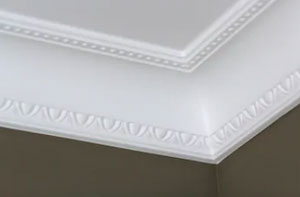 Plastering Near Me
Plastering Near Me Plasterer Bath
Plasterer BathIf you need local Bath info take a look here
More: Patch Plastering, Pebble Dashing, Plastering Companies, Plasterers, Plastering, Plaster Repair, Plasterer, Domestic Plastering, Plasterer, Plastering, Plastering, Cheap Plasterers, Plastering Firms, Cheap Plasterers, Plastering Specialists, Plastering Repair, Plaster Repair, Cheap Plasterers, Commercial Plastering, Plaster Skimming, Plastering Specialists, Plastering, Plastering Services, Domestic Plastering, Plastering, Plaster Repairs, Patch Plastering, Plastering Repair, Cheap Plasterers, Cheap Plasterers, Plastering Specialists, Pebble Dashing, Internal Plastering.
Plasterers in BA1 area, 01225.
Artexing Bath - Plastering Bath - Plaster Skimming Bath - Screeding Bath - Plaster Patch Repair Bath - Rendering Bath - Dry Lining Bath - Decorative Plastering Bath - Polished Plaster Bath

